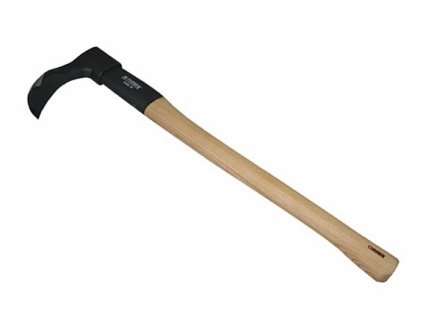Carving axes and adzes
A carving axe is a tool used for shaping and carving wood. It is similar to a traditional axe, but is smaller in size and has a more specialized blade shape, with thinner and less wedge-shaped blade (thinner blade brings higher sharpness) designed for rather shaping than chopping or splitting wood. The handle of a carving axe is typically shorter and set at a more acute angle to the blade, giving the tool a different balance and swing motion compared to a traditional axe. Carving axes are commonly used by woodworkers, carpenters, and sculptors for tasks such as chopping, splitting, and removing large chunks of wood from a piece.
Carving axes can also be used for rough shaping and smoothing the surface of a piece of wood, although a carving adze may be more suitable for these tasks.
Difference between axe and adze
Carving adzes and carving axes are both tools used for shaping and carving wood, but they have some distinct differences. Some of the main differences include:
-
Blade Shape: Carving adzes have a curved blade that is set at a sharp angle to the handle, while carving axes have a more straight, wedge-shaped blade. This makes adzes more effective for removing material in a scooping motion, while carving axes are better for initial shaping.
-
Handle Design: Adzes have a longer handle that is perpendicular to the blade, while carving axes have a shorter handle that is set at a more acute angle to the blade. This gives adzes a different balance and swing motion, which can affect the user's control and precision.
-
Uses: Adzes are typically used for shaping and smoothing the surface of a piece of wood, while axes are better suited for chopping or splitting thicker pieces of wood.
In summary, while both carving adzes and carving axes are used for shaping and carving wood, they are designed for different tasks and have distinct differences in blade shape, handle design, use, and size.





